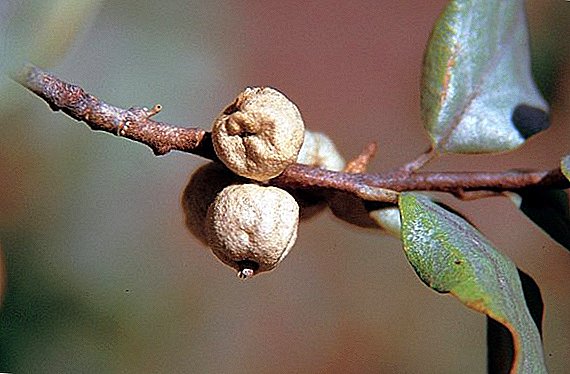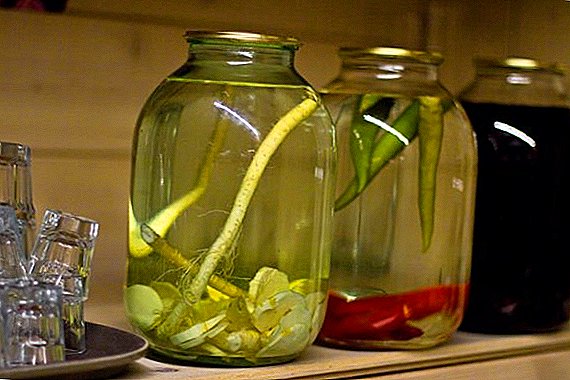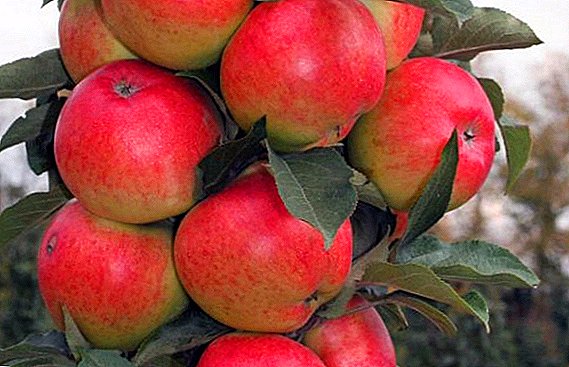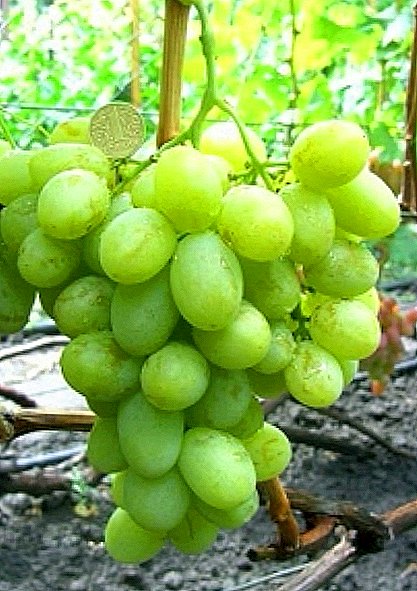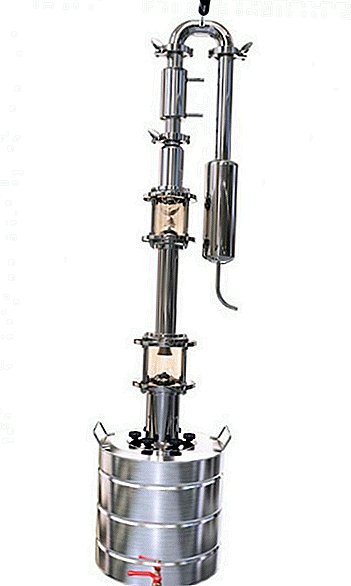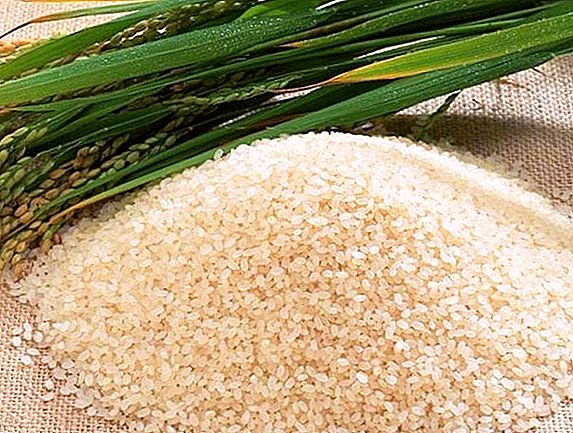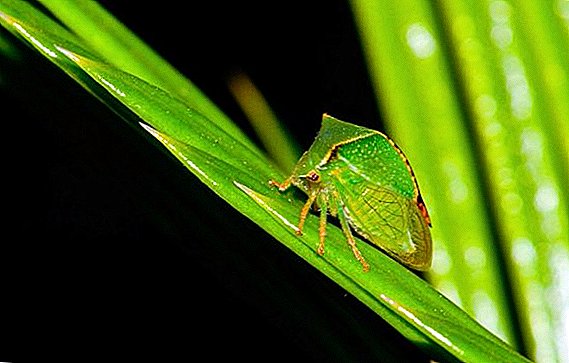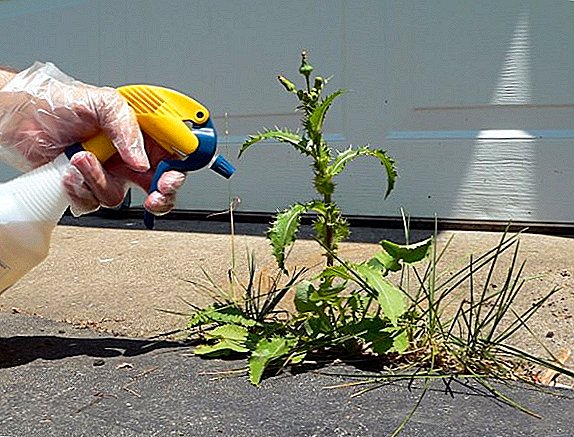 Today, the most effective means in the fight against weed plants - selective herbicides. They allow to increase the yield by 20% and are not harmful to the environment. "Puma Super" - one of these herbicides, has proven itself on the market for high efficiency against weeds and the lack of phytotoxicity relative to cultivated plants.
Today, the most effective means in the fight against weed plants - selective herbicides. They allow to increase the yield by 20% and are not harmful to the environment. "Puma Super" - one of these herbicides, has proven itself on the market for high efficiency against weeds and the lack of phytotoxicity relative to cultivated plants.
Active ingredient and release form
Active substance: fenoxaprop-P-ethyl - 69 g / l. The aggressive chemical is balanced by the antidote mefenpyr-diethyl - 75 g / l. Due to the ratio of DV (active ingredient) and antidote, it is low aggressive and can be used for weed treatment in fields with frozen and weakened crops.
Form release - oil-water emulsion, available concentrations of 7.5 and 10%. Package type - canister with a capacity of 5 liters and 10 liters. The drug is poorly soluble in water and has a low leaching potential (quickly decomposes into safe components and does not accumulate in the soil).
You can also fight weeds with the help of such herbicides: Esteron, Harmony, Grims, Agritox, Axial, Euro-litting, Ovsyugen Super, Lancelot 450 WG and Corsair.

What is effective against
"Puma Super" is effective against dicotyledonous weeds of cereals: canary, chicken millet, foxtail, bony, broomstick, carrion, bristle, etc. Especially good results of application against oats.
Did you know? The first drug, which was massively used in the fight against dicotyledonous cereal weeds, was the herbicide of the hormone-like action 2,4-D.

Drug benefits
The drug has several advantages among which:
- High selectivity, safety for cultivated plants.
- It can be used on both pure and hybrid cultures.
- Low toxicity: safe for summer bees 3 hours after treatment. Non-toxic to humans and animals.
- Economical: in the instructions for use for processing 1 hectare required 0.8-1 l of the herbicide "Puma Super", depending on the contamination of the site.
- System action Even a small amount of the drug that fell on the weed, causes his death.
- Successful experience of application to various cultures in various soil-climatic zones.
- It does not accumulate in the soil and is not absorbed by the roots of plants.

Mechanism of action
DV of the drug inhibits the enzymes responsible for the first stage of the biosynthesis of fatty acids, as a result of which the chain of vital biochemical reactions is interrupted. Fatty acids - the building blocks of fats, which are part of all plant cell membranes. That is, entering into chemical reactions with weed substances, the drug blocks the formation of new tissues. Although the final wilting does not occur until the twelfth day after the treatment, the weed stops growing and consuming nutrients from the soil. within 3 hours after treatment. All subsequent days until complete death, destruction and degradation of already existing tissues occurs.
After three days, the weed treated with Puma Super begins to show signs of chlorosis (discoloration of the green parts of the plant), followed by necrosis (blackening). 
How to process
There are two variants of the herbicide: with a higher ("Puma 100") and a lower ("Puma 75") DV concentration. The concentrated variant has a lower consumption rate - 0.4-0.6 l / ha, and less concentrated - 0.8-1 l / ha.
The drug "Puma Super" is intended for ground and aviation processing. Processing takes place in three stages:
- Preparatory.
- Active.
- Recycling.
Did you know? The practice of commercial use of pesticides is not so great. For example, the first aeronautical field processing was carried out only in 1932.

The preparatory stage includes:
- Preparation of the working solution. The working solution is mixed at the rate of 10 ml of herbicide per 10 l of water for the "Puma 75" and 5 ml / 10 l for the "Puma 100". A solution based on concentrated emulsions is prepared in two stages: 1) actively stir up the emulsion with a small amount of water until complete homogeneity; 2) while stirring, the mixture obtained is poured into the main tank filled with water for a third. After the emulsion-water solution was combined with 2/3 of water, it was again mixed and the tank was filled to the brim. When working with chemicals, you should always observe safety precautions: maintain a distance from foodstuffs and places of permanent stay of people and animals, mix chemicals either outdoors or in special rooms.
- Equipment preparation. Ensure that the tank is not contaminated with residues of previous chemicals, and that the atomizer is in good condition. Rinse the tank with plain water.
- Uniform operator. Puma Super has 3rd class of toxicity for humans and animals (low toxicity), but by working without protection with a concentrated emulsion, and then with a sprayer, the operator puts himself at risk of intoxication. A standard suit for working with herbicides includes: rubber gloves, rubber boots or other closed shoes, overalls or thick workwear that covers hands and feet, a thick cloth apron or rubberized, a headdress, gauze bandage on the nose and mouth, and vacuum glasses.
Find out more about weed-free herbicides.
 Active stage - directly processing. Processing should be carried out in the early morning or late evening, when solar activity is reduced, and the air temperature is about 25 ° C. The weather should be windless - the wind speed is not more than 5 m / s. Both versions of the herbicide, like "Puma 75" and "Puma 100", are used according to the same technology, the difference is only in the dosage of DV.
Active stage - directly processing. Processing should be carried out in the early morning or late evening, when solar activity is reduced, and the air temperature is about 25 ° C. The weather should be windless - the wind speed is not more than 5 m / s. Both versions of the herbicide, like "Puma 75" and "Puma 100", are used according to the same technology, the difference is only in the dosage of DV.Before processing, warn your neighbors: do not allow animals or children to be near.
Important! Vegetables and fruits, which could get a pesticide, can be eaten 3 days after processing the fields, after having washed them with running water.

The disposal phase includes the disposal of residues of the herbicide and the cleaning of workwear. To neutralize the remnants of chemicals in the tank, it is poured with 10% solution of washing soda and leave for 6-12 hours, then rinsed several times with running water. You can also use wood ash, which is diluted to a pasty state and fill the container with it for 12-24 hours, followed by rinsing with running water. Clothes are also treated with soda: in a 0.5% soda solution, the clothes in which the operator has worked are soaked for 2-3 hours, and then they are washed with ordinary detergents. Shoes also wipe with soda solution.
Impact speed
The drug begins to act within 1-3 hours after contact with the surface of plants. If the "Puma 75" variant was used, the first visual changes can be seen on the 3-4th day, if the "Puma 100" is already on the second day.
Period of protective action
As with any systemic herbicide, the entire vegetation period of sprouting weeds is active, it does not destroy weed seeds, therefore, it does not have a prolonged action. 
Compatibility with other pesticides
"Puma Super" incompatible with herbicides of hormone-like action: phenoxyacetic acids (2,4-D), benzoic acids (dicamba) and pyridine-carboxylic acids (flucurysipil, clopyralid). DV of the drug can react with DV of the listed substances with the loss of useful properties. It is also not recommended to make tank mixtures with fungicides and surfactants. It is well compatible with sulfylureas, with other preparations it is recommended to test for physical and chemical compatibility. Experimenting with pesticides, one should avoid mixing concentrates and use only diluted solutions for samples.
Did you know? In the recent 1990, the successful German company is still today. "Bayer" supplied 50% of all pesticides produced in the world. Soon the French company competed with it. "DuPont".
Toxicity
"Puma Super" is slightly toxic to humans, animals and bees (3rd class of toxicity). 
Learn how pesticide use affects health and the environment.With the attendant adverse conditions, there were reported cases of slight phytotoxicity of the drug Puma 100 relative to barley. After processing, a change in color from light yellow to whitish was observed along the edge of the crop leaves. As a rule, the normal color of the leaves was restored on their own within 10-14 days, temporary discoloration did not affect the quality of the crop.
Important! In case of severe herbicide poisoning, you should go to the hospital as soon as possible. Fresh air, gastric lavage and diuretic intake will be a good first aid.

Shelf life and storage conditions
Shelf life - 2 years from the date of manufacture. Store preferably in original packaging, in a place protected from direct sunlight and high temperature fluctuations. The temperature in the storage room should not rise above 50 ° C and fall below 5 ° C.
Making a brief review, you can summarize that "Puma Super" - selective herbicide of systemic action, low toxic and effective in the fight against cereal weeds. Suppresses the synthesis of fatty acids, which leads to the death of weeds. In high concentrations it may show slight phytotoxicity with respect to barley, but only if the culture is weakened by cold, drought, etc. It is incompatible with hormone-like pesticides, fungicides and surfactants. Decomposed in the soil to inactive substances for 3 weeks. Here, perhaps, the main thing you need to know when choosing a drug. Good harvest!



